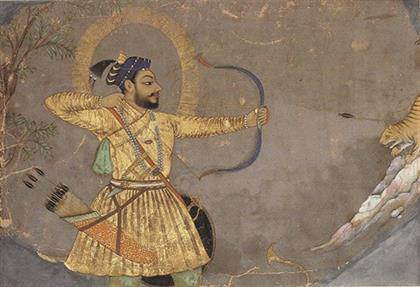
Kunmanara Hogan, Tjaruwa Woods, Yarangka Thomas, Estelle Hogan, Ngalpingka Simms and Myrtle Pennington, Kungkarangkalpa (detail). Acrylic on canvas, 2013. © the artists, courtesy Spinifex Arts Project.
Art from Indigenous Australia at the British Museum British Museum presents ‘Indigenous Australia: enduring civilisation’, the first major exhibition in the UK to present a history of Indigenous Australia, both Aboriginal peoples and Torres Strait Islanders, through objects. 23 April – 2 August 2015.]]>
Source: British Museum
The objects in the exhibition will range from a shield believed to have been collected at Botany Bay in 1770 by Captain Cook or one of his men, a protest placard from the Aboriginal Tent Embassy established in 1972, contemporary paintings and specially commissioned artworks from leading Indigenous artists. Many of the objects in the exhibition have never been on public display before.
The objects displayed in this exhibition are immensely important. The British Museum’s collection contains some of the earliest objects collected from Aboriginal people and Torres Strait Islanders through early naval voyages, colonists, and missionaries dating as far back as 1770. Many were collected at a time before museums were established in Australia and they represent tangible evidence of some of the earliest moments of contact between Aboriginal people, Torres Strait Islanders and the British. Many of these encounters occurred in or near places that are now major Australian cities such as Sydney, Melbourne, Adelaide, and Perth. As a result of collecting made in the early 1800s, many objects originate from coastal locations rather than the arid inland areas that are often associated with Indigenous Australia in the popular imagination.
The exhibition will not only present Indigenous ways of understanding the land and sea but also the significant challenges faced by Indigenous Australians from the colonial period until to the present day. In 1770 Captain Cook landed on the east coast of Australia, a continent larger than Europe. In this land there were hundreds of different Aboriginal groups, each inhabiting a particular area, and each having its own languages, laws and traditions. This land became a part of the British Empire and remained so until the various colonies joined together in 1901 to become the nation of Australia we know today. In this respect, the social history of 19th century Australia and the place of Indigenous people within this is very much a British story. This history continues into the twenty first century. With changing policies towards Indigenous Australians and their struggle for recognition of civil rights, this exhibition shows why issues about Indigenous Australians are still often so highly debated in Australia today.
Related content
‘Australia’: major survey of Australian art at Royal Academy of Arts, London (exhibition, 2013)
Follow us on:


